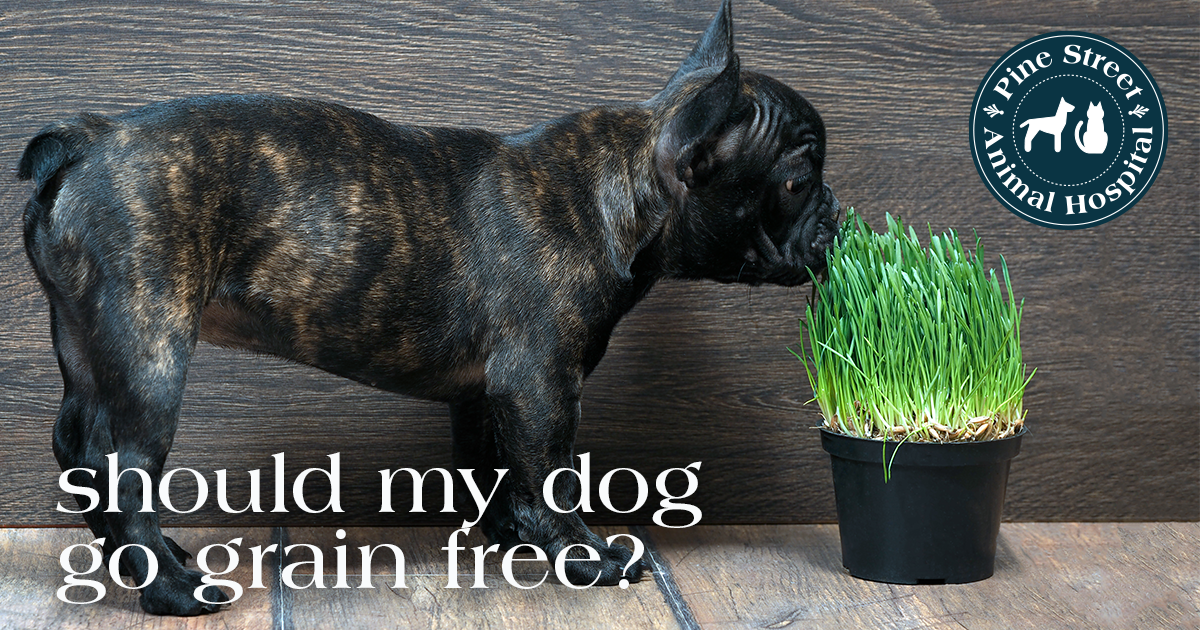Food trends, food research and food information shared via social media seems to be growing every day. With all the “do eat this” and “don’t eat that” advice out there, it’s easy to find conflicting information and get overwhelmed. On top of that, the food advice is not just for humans, but also for pets. And since industry can always make money off of trends, many pet companies are jumping on the bandwagon to offer products in line with the latest food advice.
One such trend we’re seeing in pet food (and human food) is the avoidance of grains. A look at the dog and cat food shelves– either at the grocery store, bargain store, or high-end pet store – shows several new options of dry and wet foods that are labeled “grain free.” But what does that mean, and does your dog or cat need to eat grain free?
What’s in grain-free pet food?
The common grains found in most pet foods and treats are corn, wheat and oats. Once these grains are removed, something else has to fill in. Many pet foods, especially higher-end brands, add more quality protein. Others add meat by-products or soy. So removing grains does not always mean increasing protein. Often the level of starch is the same if not more, as companies will add potatoes or other fillers to replace the grain. So make note: grain-free and starch-free are not the same thing.
Are grain-free pet foods healthier?
In following the paleo and gluten-free diet trends of humans, pet food makers are arguing that pets too may benefit from more protein and less carbs. Others make the argument that since early dogs and cats centuries ago did not eat grains, they shouldn’t eat them now. But our domesticated pets’ digestive systems have evolved, and most pets can handle grains well and are fully adapted to this kind of diet variety.
While increasing protein and reducing carbs can help some humans lose weight, it’s not necessarily beneficial for all dogs and cats. In fact, the healthiest food for your pet is a nutritionally balanced diet that you’ve discussed with your veterinarian. Many people assume that pets with allergies need to reduce grain consumption, but, among the few dogs whose allergies are caused by food, more of them are allergic to meat and dairy rather than to grains. A low-carb (not just low-grain), high-protein diet has been shown to help diabetic cats and dogs, so this diet is worth considering if your pet has diabetes.
Should my pet eat a grain-free diet?
In general, dogs and cats need variety in their food. It is likely not necessary to remove all grains from your pet’s diet. That said, your pet may benefit from reduced calories (if obese) or increased protein, so choosing to give no-starch, high-protein treats, or supplementing a high-protein food occasionally, may benefit some pets. It’s always best to consult your veterinarian before making any food changes for your pet. And remember, just like human diet trends, not all of these popular changes work, and many can be harmful.
Dr. Adcock and Dr. Gorney would be happy to discuss the best types of food for your dog or cat, whether they are obese, diabetic, geriatric, used for hunting, or doing just fine. Contact us today for an appointment.



